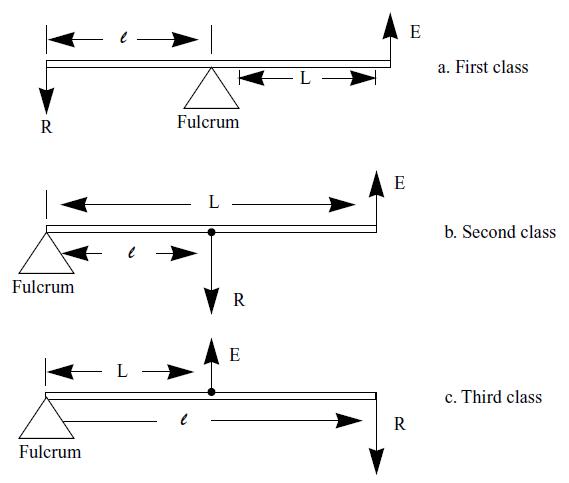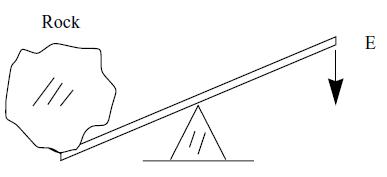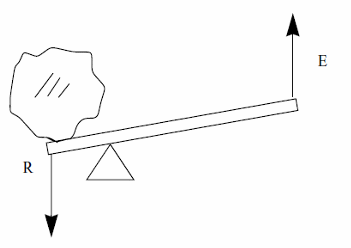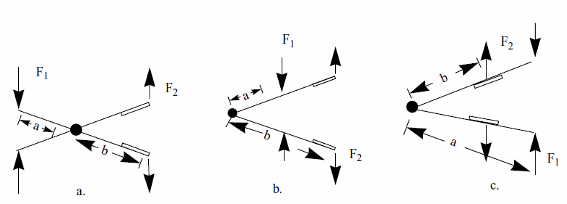
Properties:
The length of the effort arm is the same number of times greater than the length of the resistance arm as the resistance to be overcome is greater than the effort you must apply.
Figure 2 shows a practical example of a first class lever.

Formula : (see figure 1)
L/l = R/E
Where: L = length of effort arm
l = length of resistance arm
R = resistance weight or force
E = effort force
Mechanical Advantage
The ratio between the effort and the weight to be moved gives the mechanical advantage of a lever (MA).
Formula:

MA = R/E
Where:
MA = Mechanical advantage
R = resistance weight or force
E = effort force
If MA > 1 the lever has a positive gain of force
If MA < 1 the lever has a negative gain of force
Properties:
a) Second class levers have positive mechanical advantege since the they can be used to magnify the applied force.
b) Third class levers have negative mechanical advantage since you need more effort than the weight to be moved.
c) First class levers can have positive or negative mechanical advantage depending on the length of the arms.
Grippers
Grippers may be considered as levers and according the geometry one of the previous formulas is applied.
Figure 4 shows the main types of grippers and the formulas to calculate the forces and lenghts are the next:

Formula
F1/F2 = a/b
Where:
F1 and F2 are the involved forces
a and b are the length of the arms



